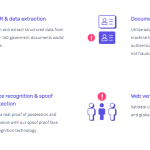Cross-Device Attribution Isn’t Perfect, But It’s Critical

eMarketer: How critical is it to crack cross-device attribution in today’s marketing world?
Michael Lampert: Right now, the channels are innovating faster than we can come up with ways to count them. With the explosion of all of these different devices, the industry is looking to give proper credit in an ecosystem that just got more complicated than it ever was when we were just doing this between search and display.
eMarketer: Where does this leave companies like [digital ad agency] 360i trying to make sense of this increasingly complex world?
Lampert: I think companies are doing the best they can, given the fact that there is no perfect solution. If you’re Wal-Mart, Amazon or Target and you can use your own data and tie it back to in-store activity or brick-and-mortar activity, you’re the exception, not the rule.
We are a ways away from the perfect attribution for digital, but I don’t think that’s a bad thing. I just think the attribution is mirroring the complexity.
The attribution companies can’t customize a product for every client, so they try to create things that are useful to the majority. In my experience, third-party attribution is really for guidance: It’s not 100% useful because with all of the different data sources that you’re being asked to own, track and integrate, unless you have one corresponding data-management-platform-like object where everybody can go in and access the same data set, it’s very hard to come up with the true value of the impression.
eMarketer: What are agencies doing about this?
Lampert: A lot of agencies like us are investing in advanced analytics practices where we have guys with PhDs in linear math looking at terabytes of data to try and find patterns within campaigns that can help us optimize better and look at the way we allocate dollars across channels.
Because of this, you also see a lot of agencies looking at marketing mix model products to take that campaign response data and look at the relationship between channels in order to answer that very important question of “Where should the next dollar go?”
We also use some third parties to tie back digital exposure to offline purchases, which we think is very important considering potentially 80% to 90% of purchases are not happening on-site. There has to be a way to tie back digital exposure to offline purchases. Purchase data is really mission-critical now.
eMarketer: How satisfied have you been with existing capabilities for matching digital and offline data?
Lampert: There are limitations, but I’m willing to accept some gray area in the absence of a perfect model. There’s no one unifying way to tie back everything from search data to direct mail files. And then you have to match those files up to devices, transactions and then some sort of closed loop.
Obviously, there are challenges with device matching, whether it’s shared devices or cookie deletion. And then consider that any given financial services provider using purchase data only has access to their own purchase data.
(17)












